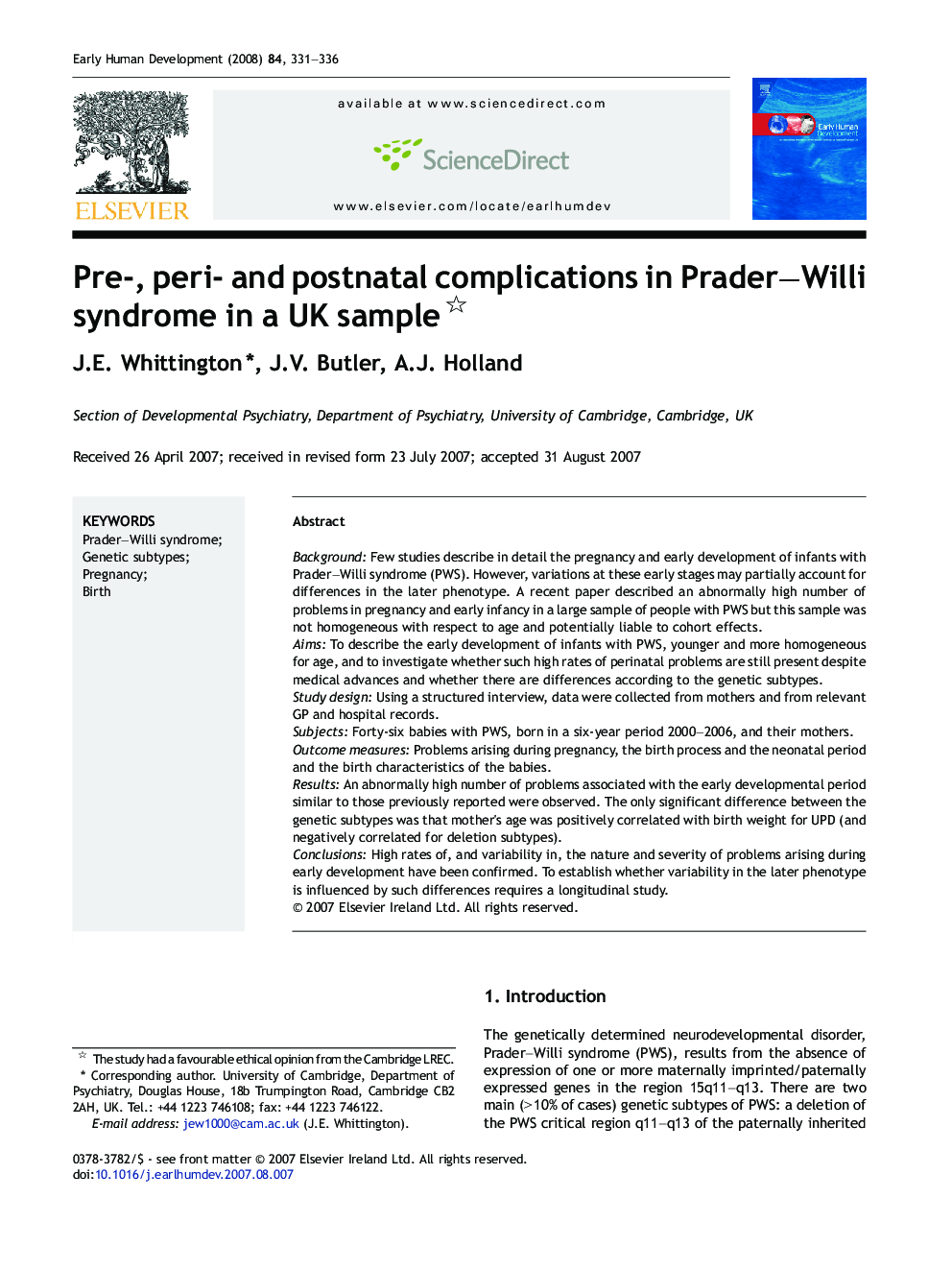| Article ID | Journal | Published Year | Pages | File Type |
|---|---|---|---|---|
| 3917621 | Early Human Development | 2008 | 6 Pages |
BackgroundFew studies describe in detail the pregnancy and early development of infants with Prader–Willi syndrome (PWS). However, variations at these early stages may partially account for differences in the later phenotype. A recent paper described an abnormally high number of problems in pregnancy and early infancy in a large sample of people with PWS but this sample was not homogeneous with respect to age and potentially liable to cohort effects.AimsTo describe the early development of infants with PWS, younger and more homogeneous for age, and to investigate whether such high rates of perinatal problems are still present despite medical advances and whether there are differences according to the genetic subtypes.Study designUsing a structured interview, data were collected from mothers and from relevant GP and hospital records.SubjectsForty-six babies with PWS, born in a six-year period 2000–2006, and their mothers.Outcome measuresProblems arising during pregnancy, the birth process and the neonatal period and the birth characteristics of the babies.ResultsAn abnormally high number of problems associated with the early developmental period similar to those previously reported were observed. The only significant difference between the genetic subtypes was that mother's age was positively correlated with birth weight for UPD (and negatively correlated for deletion subtypes).ConclusionsHigh rates of, and variability in, the nature and severity of problems arising during early development have been confirmed. To establish whether variability in the later phenotype is influenced by such differences requires a longitudinal study.
